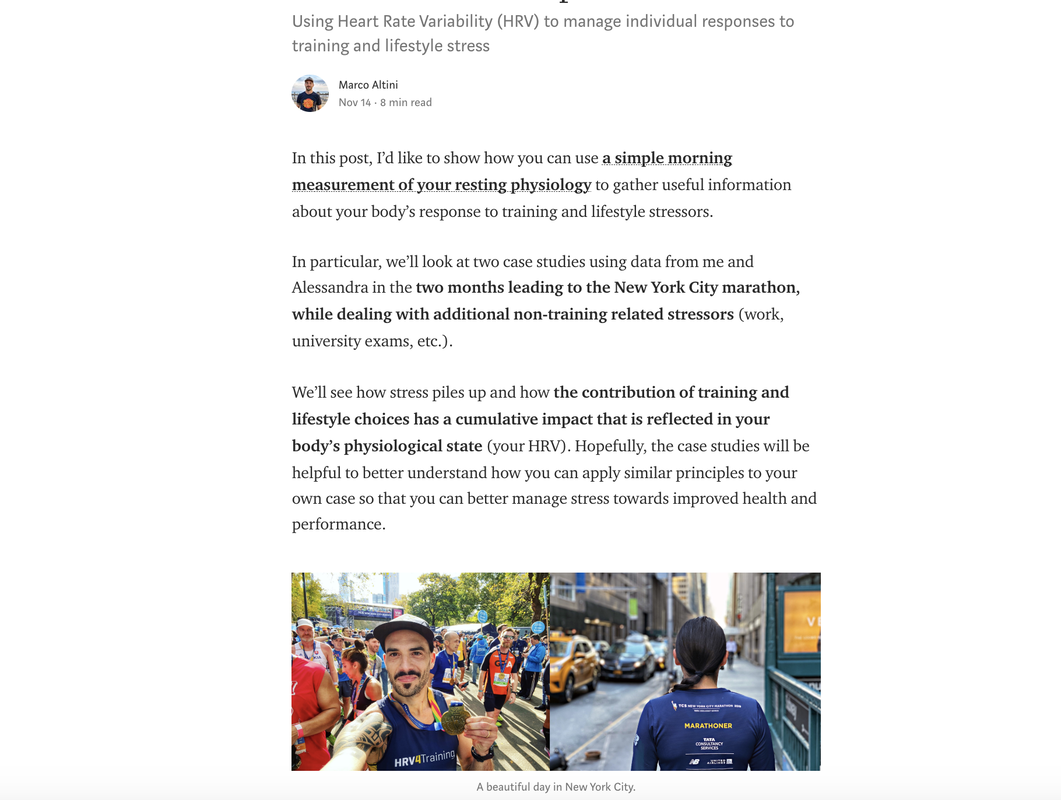|
In this post, I’d like to show how you can use a simple morning measurement of your resting physiology to gather useful information about your body’s response to training and lifestyle stressors.
In particular, we’ll look at two case studies using data from me and Alessandra in the two months leading to the New York City marathon, while dealing with additional non-training related stressors (work, university exams, etc.). We’ll see how stress piles up and how the contribution of training and lifestyle choices has a cumulative impact that is reflected in your body’s physiological state (your HRV). Hopefully, the case studies will be helpful to better understand how you can apply similar principles to your own case so that you can better manage stress towards improved health and performance. Comments are closed.
|
Marco ALtiniFounder of HRV4Training, Advisor @Oura , Guest Lecturer @VUamsterdam , Editor @ieeepervasive. PhD Data Science, 2x MSc: Sport Science, Computer Science Engineering. Runner Archives
May 2023
|

 RSS Feed
RSS Feed